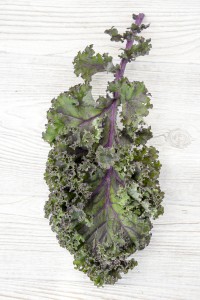 We planted kale at the research farm on the 30th both in containers and in beds. We chose a handful of varieties – Red Russian, Siberian, Lacinto and Dwarf Curly Scotch.
We planted kale at the research farm on the 30th both in containers and in beds. We chose a handful of varieties – Red Russian, Siberian, Lacinto and Dwarf Curly Scotch.
I attended a vegetable trial this summer, and learned that there are two traditional kale planting times; a summer planting and a winter planting. Kale is cold-hardy, so you can put out transplants very early in the spring – that’s April in my area; even earlier if I cover them up with row covers. When you get enough leaves to harvest, harvest each plant from the bottom up. The resulting kale plant, over time, looks like a palm tree. As the heat of the summer comes on, the leaves can turn bitter – my kale is usually “done” by August. Once this happens, you can compost the remaining plants.
Another thing I learned – the winter-grown kale, which will go through a number of frosts, will taste better than non-frosted kale. A trick is to harvest summer kale leaves and put flat in zip lock bags and freeze to duplicate the frost effect. The freezing increases the sugar and gives them a better texture. So our test will be to see if our newly planted kale does taste better than all the kale that was eaten at the research farm this summer. The way the weather is going on around here, frost could occur at any time.
We’ll be back to shipping kale in Spring 2015 – stay tuned for more information!

How do I know when to harvest sweet potatoes. Vines growing profusely.
Great question! You should actually let your sweet potatoes grow until the ends of the vines turn yellow, or even a little longer – just don’t let them get bitten by the frost. Early fall is usually the right time.